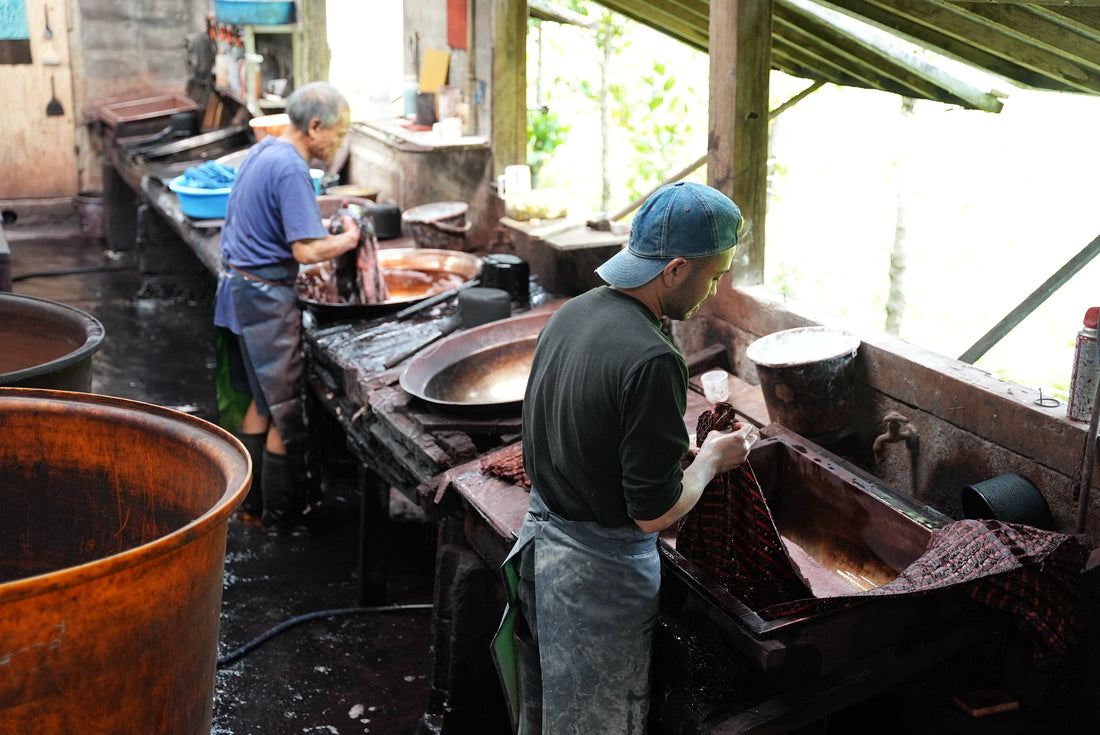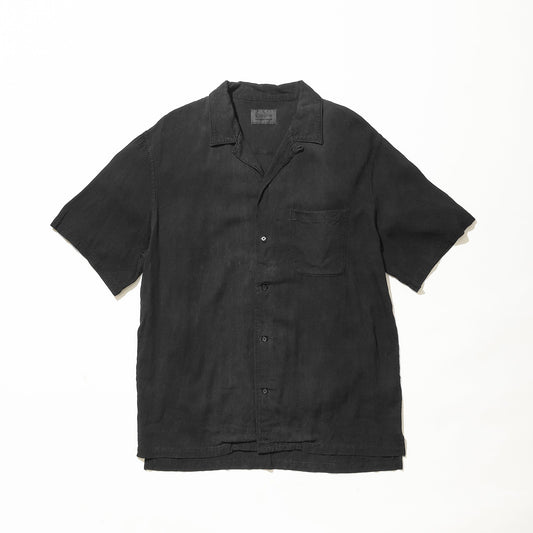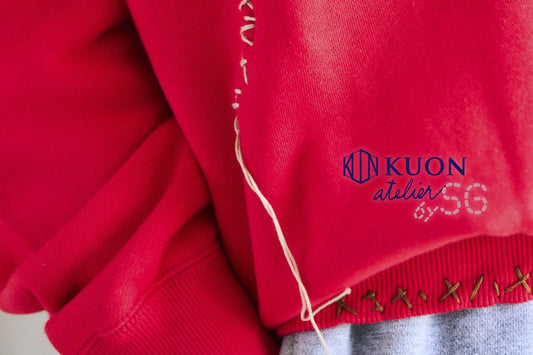
Inheritance of the culture of “Dyeing” by “Wearing”
Share
Hi, this is Shohei.
On Saturday, April 26, KUON Style Lab will launch a new summer-ready release: a collection of open-collar shirts dyed using traditional Japanese natural dyes.
The featured dyes—indigo, mud, and sumi (soot/charcoal)—hold a place in our hearts equal to sashiko, Sakiori and Boro fabric. These techniques are an essential part of KUON's DNA.
Dyeing is more than adding color—it’s a conversation with nature, a record of time and human touch. Each shirt bears the breath of the artisan and the memory of the land.
Wearing Nature — KUON’s Natural Dye Series

Three Dyes, Three Expressions
This collection features three open-collar shirts, each dyed using a different natural dye: indigo, mud, and soot/charcoal. All are hand-dyed using natural materials by skilled artisans. While the dyeing methods share the same respect for nature, each yields a unique depth of color, texture, and character that will change over time.
-
Aizome(Indigo dye)—a clear, deep blue that gains complexity with every wear.
-
Dorozome(Mud dye)—a warm, earthy brown that wraps the body like the soil itself.
-
Sumizome(Soot/charcoal)—a muted black with a quiet, contemplative presence.
These colors are fleeting yet powerful. They evolve with your lifestyle as you wear, wash, and sun-dry them—shirts you can grow with.
Japan Blue-Indigo
Indigo blue is more than just a color—it’s a traditional hue etched deep into the DNA of the Japanese people.

KUON’s indigo dye is rich in complexity, far beyond what can be described as simply “blue.”
We use Indian indigo, dyed in Amami Oshima. Of all indigo sources, Indian indigo contains the highest concentration of pigment. The tropical climate of Amami is ideal for growing the indigo-producing legume. These eco-friendly plants drop seeds that sprout naturally and grow vigorously.
Charms of Aizome
The uneven color gradients, the way the fabric changes with repeated wear and wash, and how sunlight brings out unexpected shades and fades. The way it ages—forming “whiskers” like denim—makes each piece entirely unique. It’s a joy to wear for years, even after the color fades and holes begin to form.

-Ageing of my shirt worn for years
Beyond beauty, natural indigo also offers durability, deodorizing effects, and was even used under samurai armor for its healing and antibacterial properties.
You’ll be wearing it for a long time before it ever wears out.
The Earth of Amami-Dorozome

Among KUON’s offerings, mud-dyed pieces are some of the most expressive and soulful.
Despite the humble name, the dyeing process is surprisingly intricate, labor-intensive, and deeply human.
Mud dyeing is a technique unique to Amami Oshima. The fabric is first dyed in an extract from local Techi (Japanese hawthorn) wood, then dipped into mud fields rich in iron. A chemical reaction between the wood’s tannins and the mud’s iron particles creates a beautiful, earthy color.

-Techi wood chips in iron cage

-Boiling for 2 days

-thickened dye solution

-dipping clothes for many times by hand

-Soaking clothes in a muddy field after dyeing with a dye made from Techi wood
The process includes around 20 rounds of dyeing in the wood extract before the first mud dip—and this cycle is repeated three times. It’s a physically demanding and time-consuming craft.

From boiling Techigi in iron kettles to hand-dyeing each piece, every step—drying, rinsing, and moving up and down the mountains—is done by hand.
This commitment results in the rich, subtle complexity only mud dyeing can achieve.
A single shirt born through this process becomes something truly special.
Like indigo, the mud-dyed pieces also age gracefully. Curious about how they age? You can check it in this article.
Muted Black-Sumizome

When we think of KUON’s black, we think of Sumizome.
Traditionally used for writing and calligraphy, sumi has long helped the Japanese express their thoughts and emotions. Translating this cultural symbol into contemporary fashion is what makes KUON’s black uniquely powerful.
KUON’s sumi dye is beloved not only in Japan, but around the world.
It comes from a small workshop in Shizuoka.

The black pigment is made by burning pine wood to create soot (shōen), which produces a delicate yet rough texture—an indescribably rich black.

Each shirt is dyed one by one, soaked repeatedly in a small vat, washed, then sun-dried until the perfect black is achieved.

The sunlight deepens the tone, giving it warmth and texture.
And the fact that this globally loved dyeing technique is done in a place that feels like someone's backyard? Somehow, that makes it even more endearing.

Learn more about the aging of sumizome items here.
Indigo, Mud, Soot—The Soul of KUON’s Craft
At KUON, we’ve always honored the hands and hearts behind Japan’s traditional crafts.
This time, through the lens of KUON Style Lab, we’ve reinterpreted these time-honored dyeing techniques into garments that feel natural in today’s world.
To wear nature
To live tradition
We invite you to experience this quiet richness for yourself—available in-store and online on April 26.














